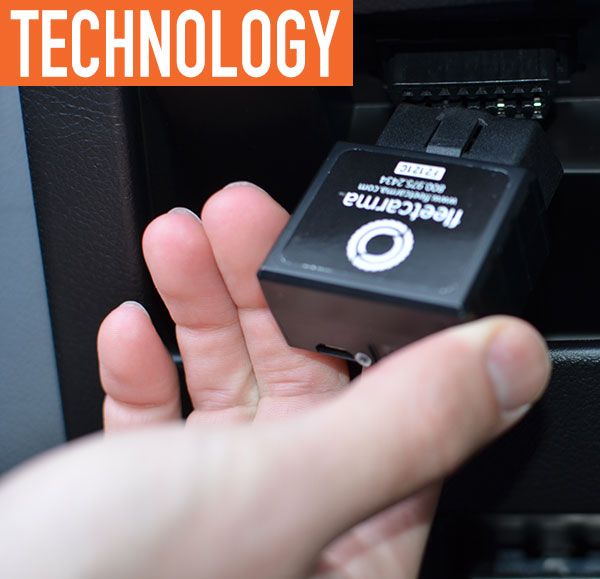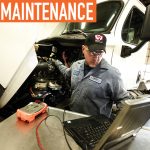Fleet managers have multiple priorities: make sure the job gets done, keep drivers safe, and reduce cost. Top on that priority list isn’t exactly “save the planet.” Integrating electric vehicles (EVs) into an established fleet is not necessarily the first thought that comes to every fleet manager’s mind. Switching to or adding EVs to your company’s fleet, however, can reduce cost and increase ROI, all while reducing emissions—that’s something definitely worth considering.
Companies like UPS, TransPower, and PG&E are already integrating EVs into fleet circulation. Not only are there social and environmental advantages to EVs, but also economic and time saving—when you get the right EV for the job. FleetCarma, a division of CrossChasm Technologies Inc., provides the technology fleet managers need to reduce the cost of operating their fleet. The ability to create EV modeling/simulation from existing fleet data in order to put the right EV to use is a technology unique to FleetCarma.
AND SO IT BEGINS…
With the EV sustainability assessment (EVSA), you may be thinking, “That sounds fun and exotic and scientific-like,” or “Sounds like a pain in the…” But, slow down with initial reactions. FleetCarma’s Mark Goody, manager, electric vehicle programs, explains a little about the EVSA: “It’s what we call the gold standard fleet electrification tool to help fleets choose the best fitting EV for their duty cycles.” EVSA is a three-step process:
- A FleetCarma OBDII device is plugged into a vehicle of the existing nonelectric fleet, logging data from the vehicle for 3-4 weeks. The device is “collecting all of the second-by-second data, understanding day-in and day-out what the vehicles are used for, how far they travel, and what the fuel consumption is,” says Goody. In this way, FleetCarma creates a benchmark for the existing fleet vehicles.
- FleetCarma then takes the data and, with its patented EV modeling technology, simulates it through different EV makes and models currently available on the market. The company virtually drives the vehicles in a computer program, showing how they would perform in the in real world, including whether the vehicle would be range- and charge-capable and what would be the total cost of ownership. “The EVSA tool would be, essentially, showing the fleet and each of the duty cycles to examine which EV make and model is suited to that application using real-world driving analysis and EV modeling,” says Goody.
- FleetCarma then provides the fleet with a 20-page, comprehensive report, which includes the current fleet’s performance, easy modeling exercise, what sort of data was found, and which vehicles would be best suited—or not at all suited—for those duty cycles examined. This report is used to help the fleet manager or sustainability professional build a multi-tier fleet electrification plan.
BENEFITS OF EV FLEET INTEGRATION
It’s pretty widely known that EVs save gas expenses and are beneficial to the environment by decreasing emissions. But what other benefits are there? “A less tangible benefit would probably be the performance. It’s just a much more enjoyable experience—smoother acceleration—and just a better performing vehicle,” says Goody. They’re also much quieter.
Another benefit comes from using EVs in the right application. “If you have an EV with a battery pack that will take you in a range of 85-95 miles per day, it means you’re offsetting that much gas every single day. So, from an operating standpoint, they can be much cheaper,” says Goody. There’s still one more benefit to discuss: “There is a lot less maintenance involved with EVs.” Now, you’re not just looking at savings on gas, but on maintenance—and through lowered maintenance, you save on time—which means gains in uptime.

Featured Image: With FleetCarma’s EV sustainability assessment technology, fleet owners can get a solid idea of the best EV to complement their fleet.
Above: With FleetCarma’s smart charging system, fleets can automate EV charging using real-time battery state-of-charge.
A GOOD EV SIDENOTE
“There are cases when fleets will adopt EVs and put them in the motor pool where they’re not driven enough electric miles to really offset savings vs car price,” Goody says. “It’s important for EVs to keep up the electric utilization, because that’s where you’re getting the best bang for your buck.”
Let that be a warning. Not putting the right vehicle in the right spot can lead to fleet operators having a negative outlook toward EVs, making them more reluctant to put the vehicle on the road. To avoid disappointment in your EV, be sure to put the right size vehicle in the right application so you won’t risk going out of range. Goody adds, “Moving forward, as technologies continue to improve, the vehicles will be able to travel longer in a given day and range is going to become less of an issue.”
UNIQUE OFFERINGS
FleetCarma is one of a kind in an industry full of fleet technology. “FleetCarma is really the only company that provides an off-the-shelf, plug-and-play, multi-OEM system that is capable of working on EVs and getting that hard-to-get proprietary data from EVs’ CAN bus: kilowatt hour consumption from driving and charging and battery state-of-health,” Goody says. And that’s an impressive feat. FleetCarma’s technology is not only unique, it’s ahead of the game when it comes to EVs. “Our engineering team had to have physical access to any vehicle that’s in our EV database to reverse engineer the vehicles. There are lots of other companies out there that try to do it, but haven’t been successful from that standpoint.”
FleetCarma also has a number of smart charging projects rolled out in the US, Canada, and Europe. The company is using its EV monitoring technology to track real-time battery state-of-charge of EVs and communicate through a networked charging station to the utility’s grid operating system. The grid operating system then controls the charging remotely—in an automated fashion—based on current grid load, levels of charge, and by what time the individual needs the full charge. “If someone finished their job at 3:00 in the afternoon—a peak time for charging—but didn’t need 100 percent charge until the following day, the system would know.
From this information, the system determines that, even though the EV is plugged in, there is a lot of time in off-peak periods that it can do the charging. It’ll shift that charging to take place during an off-peak time, helping save money and avoiding those demand charges and costly infrastructure upgrades,” Goody says.
FleetCarma makes transitioning to an EV or EV-hybrid fleet easy on fleet managers. Since the company collects all the data necessary—doing all the footwork—fleet managers only have to choose the recommended EV for their fleet and then put it into action. The savings from integrating EVs into your fleet can negate the cost of the vehicle by cutting costs in gas, time, and maintenance, while increasing uptime. As an added bonus, EV and EV-hybrid fleets offer a quieter, more enjoyable ride. And, of course, there is the environmentally-friendly benefit.
Why not give it a try?![]()
FOR MORE INFORMATION:
Find out more about FleetCarma and what its technologies can do for you, visit www.fleetcarma.com.
_______________________________________________________________________
MODERN WORKTRUCK SOLUTIONS: JANUARY 2016 ISSUE
Did you enjoy this article?
Subscribe to the FREE Digital Edition of Modern WorkTruck Solutions magazine.
![]()




